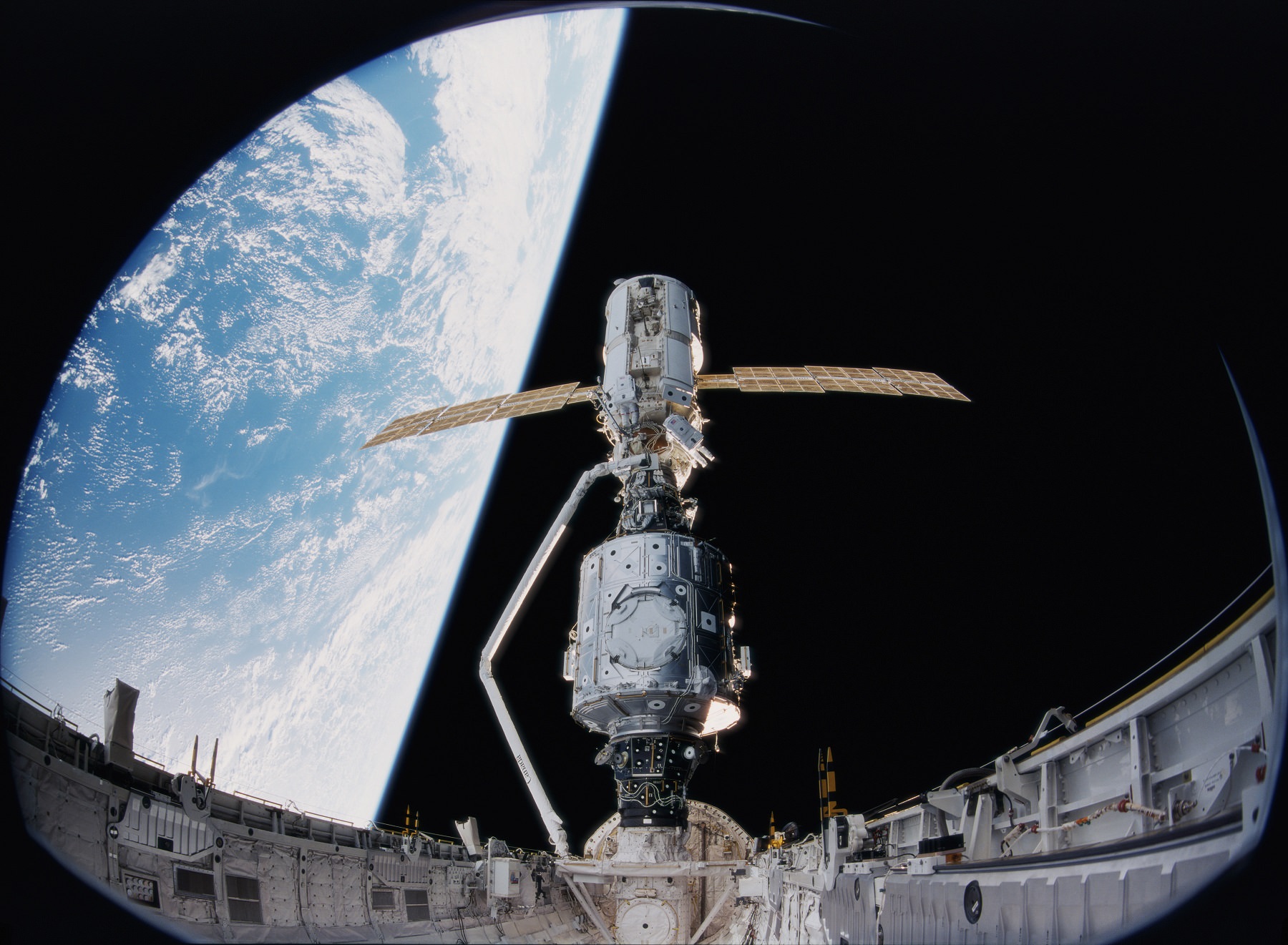It appears that the International Space Station is showing its age. Or, at least, the older modules that have been in space since 1998 certainly are. According to statements made by a senior Russian space official, cosmonauts aboard the ISS have discovered new cracks in the Functional Cargo Block (FCB) module – aka. Zarya (“Dawn”). These cracks were found in seven of the module’s twenty windows and could eventually threaten the entire station.
The Zarya module was the first component launched for the International Space Station. While funding was provided through a NASA subcontract with Boeing and the module is part of the US section, the module itself was built by the Khrunichev State Research and Production Space Center (KhSC) in Russia (a subsidiary of Energia Rocket and Space Corporation) and Roscosmos was responsible for launching it in 1998.
Zarya was also responsible for providing electrical power, storage, propulsion, and guidance to the ISS during the initial stage of assembly. Alas, after twenty-three years in space (and twenty-one in continuous operation), the module is beginning to suffer from its share of structural problems. And in space, the worst structural problem imaginable is to find cracks forming in the fuselage.

News of the issue came from Vladimir Soloviev, general designer of Energia RSC – which designed and built all of the modules in the Russian segment. As Soloviev told the Russian news agency RIA Novosti:
“Superficial fissures have been found in some places on the Zarya module. This is bad and suggests that the fissures will begin to spread over time… In this regard, we have introduced a new procedure for measuring the deflection of glass. They, of course, can be covered with sealed covers, but what is the point of flying at the station without windows?”
Soloviev did not say whether or not the cracks posed any decompression danger, but he did say previously that much of the ISS’ equipment is aging and in danger of experiencing an “avalanche” of failures beyond 2025. As of December 2018, the ISS’ operation authorization was extended to 2030, and its funding was secured until the end of 2025. However, the recent string of technical problems is leading some to conclude that the ISS may not last that long.
In September of 2019, the crew of Expedition 63 recorded a drop in internal pressure and spent the next year trying to locate the source. The leak was eventually traced to the intermediate chamber of the Russian Zvezda module, which was repaired by March 2020. While this leak did not threaten the station or crew, another leak was identified later that was staunched – but not repaired entirely.

Back in January, Soloviev reported that the leak is causing a pressure drop of 0.4 millimeters of mercury per day. In terms of barometric pressure, 760 mm is the equivalent of the atmospheric pressure here on Earth at sea level – or 101,325 pascals (Pa). That works out to a pressure loss of 0.005 pascals (0.0005%) a day, which requires that the station be pressurized with reserves, which are available on both the ISS and are transported from Earth.
Last month, the ISS also suffered a software glitch that caused the thrusters on the Nauka module to inadvertently reignite a few hours after it had docked. This was responsible for temporarily pushing the ISS out of position, which forced a delay of the Orbital Flight Test-2 (OFT-2) mission. Last month, Roscosmos also reported another drop in air pressure in the Zvezda service module.
Roscosmos has committed to remaining a partner in the ISS program until 2024 and has indicated that they may be open to extending their participation beyond that. However, Russia has also expressed interest in building its own orbital space station to replace the ISS, beginning in 2025. Last year, Russia declared they would not be signing the Artemis Accords, which would commit them to participate in NASA’s Artemis Program.
According to statements issued at the time, Russia’s refusal was based on the that the Accords were “too US-centric” and political in nature while also straying from the spirit of cooperation embodied by the ISS program. Russia has since announced a new partnership with China to create an International Lunar Research Station (ILRS), which was followed by the release of a roadmap and timeline for development – the “International Lunar Research Station (ILRS) Guide for Partnership.”
It is a sad thing to acknowledge, but the ISS’ days are numbered. That certainly seems to be the consensus among NASA, Roscosmos, and the thirteen other member nations that have participated in the ISS since its inception. But in the twenty-one years that it has been in continuous operation, the station has allowed for all kinds of scientific research, experiments, and breakthroughs.
As the only dedicated microgravity research environment, the ISS has allowed for experiments in fields ranging from astronomy and astrobiology to materials science, space weather, and medicine. In addition to space agencies, commercial entities, research institutes, and universities have managed to benefit from its continuous operation. Above all, the station has consistently served as a means for fostering cooperation between nations and space programs.
Knowing that the ISS is not long for this world (so to speak) and is likely to be replaced by multiple space stations owned and operated by competing power blocs is certainly disheartening. But hopefully, before the ISS has reached the end of its service and is deorbited, those who helped make it a reality will find a way to keep the spirit of cooperation it embodied alive.

